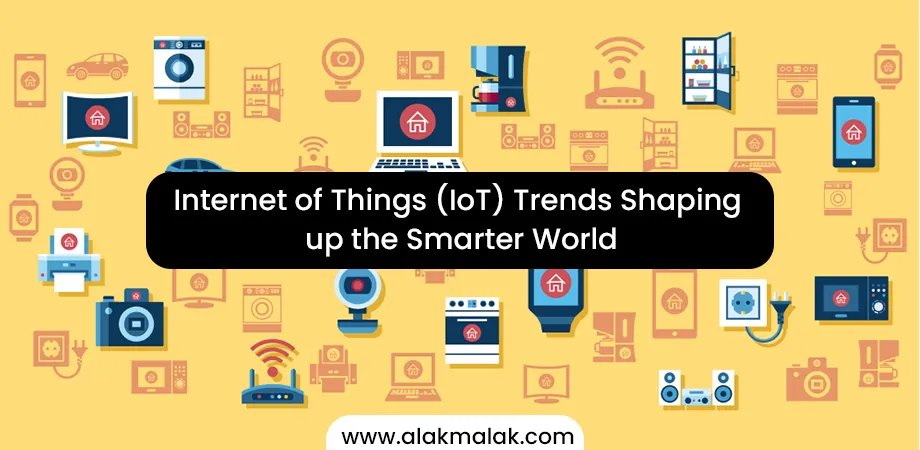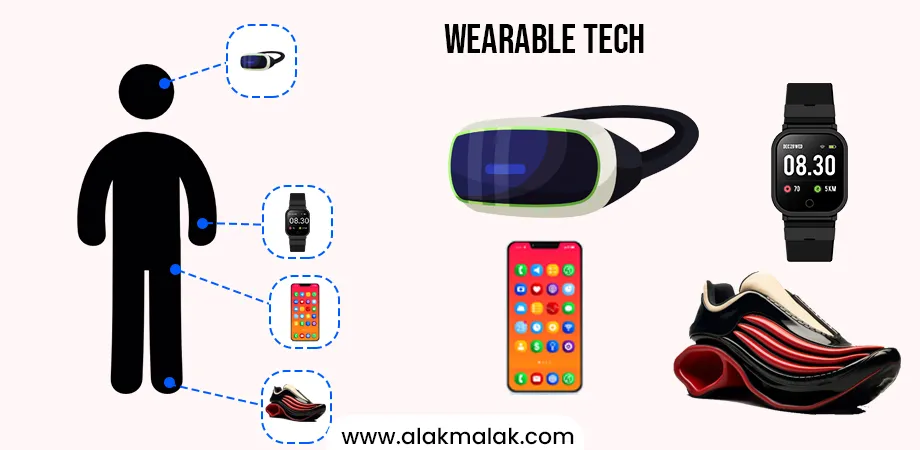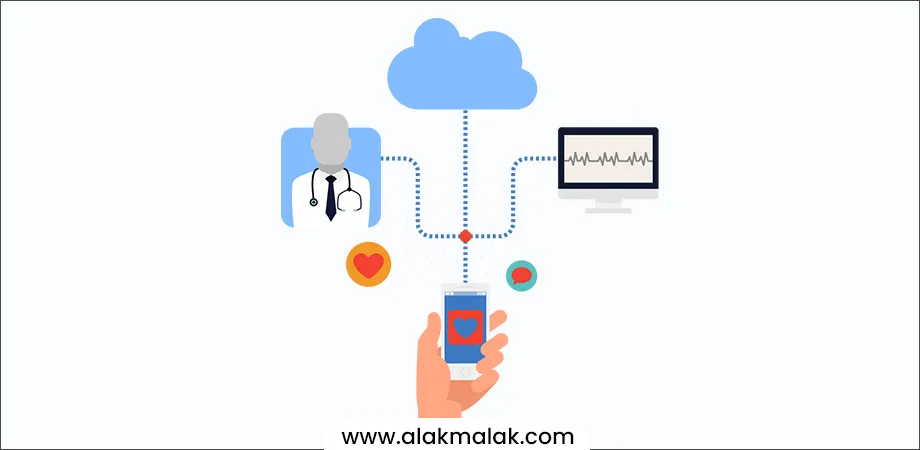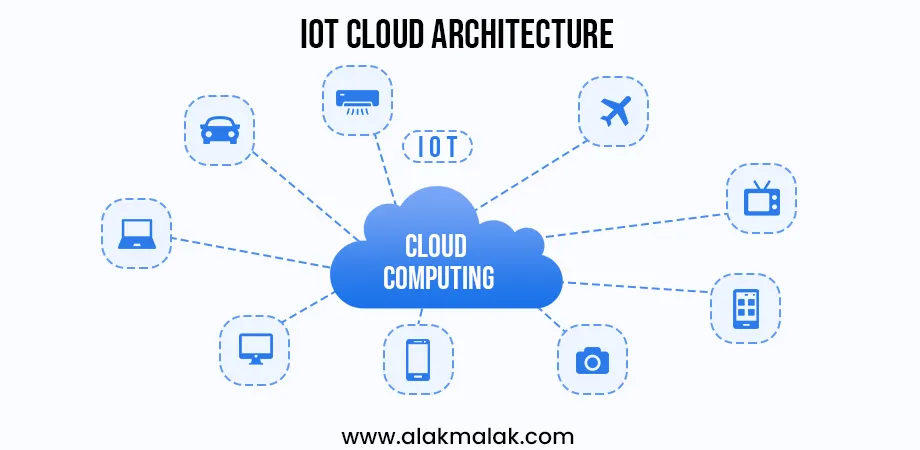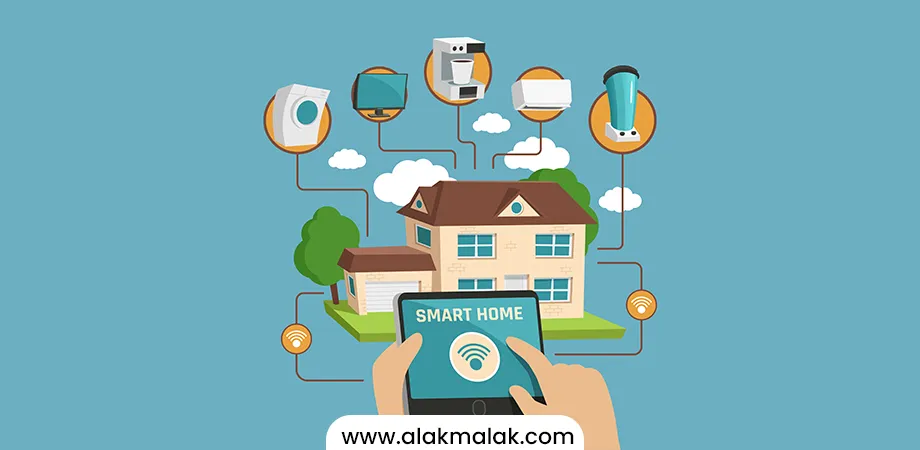Can you imagine a world where your refrigerator automatically orders groceries when you’re running low? Or where streetlights adjust their brightness based on traffic conditions? The Internet of Things (IoT) is making this seamless connectivity between devices and the world around us a reality.
While IoT has been around for years, its potential is just starting to be fully tapped into. As our world becomes increasingly digitized, businesses and consumers alike are looking for ways to leverage IoT to make their lives and operations smarter and more efficient.
This blog post will highlight the top 11 Internet of Things trends that are shaping up to revolutionize the way we live and work in 2024. From healthcare to agriculture to smart cities, IoT is poised to disrupt nearly every industry.
With over 18 years of experience working in the IoT Development field, we’ve witnessed firsthand the rapid evolution of this technology. What was once a novel concept is now an integral part of our hyper-connected world. We’re excited to share our expertise and insights on the cutting-edge IoT applications that are making our world smarter and more sustainable.
INTERNET OF THINGS TRENDS SHAPING UP THE SMARTER WORLD
1. 5G Connectivity
5G is the next generation of wireless network technology, offering faster speeds, lower latency, and greater bandwidth than previous generations. This ultra-fast connectivity is a critical enabler for the Internet of Things, allowing billions of devices to seamlessly interconnect and transmit data in real-time.
Why It’s Important
The explosive growth of IoT devices and applications requires a network that can handle massive amounts of data transfer reliably and securely. A 2022 report from Ericsson predicts there will be 29 billion connected IoT devices by 2025. 5G’s gigabit speeds, near zero latency, and increased capacity are vital for supporting mission-critical IoT use cases like remote healthcare, autonomous vehicles, and smart manufacturing.
How to Implement
Here are the key points on how businesses can implement 5G for IoT:
- Future-proof IoT deployments by embracing 5G connectivity
- Upgrade networks and devices to be 5G-capable
- Take advantage of enhanced speeds
- Take advantage of lower latency
- Utilize features like network slicing
Partner with telecom providers on private 5G networks
- Unlock secure connectivity
- Customizable connectivity tailored to specific IoT needs
2. IoT Privacy and Security
As the number of connected IoT devices continues to grow exponentially, ensuring data privacy and robust security becomes paramount. IoT devices collect and transmit vast amounts of sensitive data, making them attractive targets for cyber criminals. Implementing strong privacy and security measures is critical for maintaining user trust and avoiding costly breaches.
Why It’s Important
The risks of unsecured IoT are substantial – a 2021 IoT cybercrime report found that 97% of companies across industries had experienced an IoT-based attack. The average cost of an IoT breach was $330,000. Beyond financial losses, breaches can expose personal data, interrupt services, and damage brand reputation.
How to Implement
Safeguarding IoT requires a multi-layered approach from device manufacturers, network providers, and businesses deploying IoT solutions:
- Device Security: Encrypt data, use multi-factor authentication, automatic updates/patching
- Network Security: VPNs, firewalls, intrusion detection/prevention
- User Privacy: Consent management, data anonymization, access controls
- Ongoing Monitoring: Vulnerability scanning, incident response plans
3. Blockchain
Blockchain technology provides a secure, decentralized, and transparent way to record and verify transactions and data across a distributed network. While initially associated with cryptocurrencies, blockchain is increasingly being utilized to enhance trust, traceability, and automation in IoT ecosystems. To fully leverage these benefits, it is essential to hire blockchain developers who can tailor the technology to specific needs and integrate it seamlessly with existing systems.
Why It’s Important
In complex IoT environments with multiple entities exchanging data, blockchain helps establish a single source of truth that is immutable and verifiable by all parties involved. This fosters greater transparency, accountability, and automation of processes. A Gartner report estimates that combining blockchain and IoT could increase annual revenues by over $460 billion by 2026.
How to Implement
To leverage blockchain for IoT, organizations should take the following steps:
- Identify key use cases that require secure data sharing, auditing, and automation across a distributed network.
- Choose the optimal blockchain framework (public, private, consortium) based on requirements around decentralization and permissions.
- Integrate IoT devices and existing systems with the blockchain network utilizing APIs, smart contracts, and oracles.
- Implement robust identity management for authenticating devices and users joining the network.
4. Metaverse
The metaverse refers to a convergence of virtual, augmented, and physical realities enabled by technologies like AR/VR, IoT sensors, AI, and 5G. It aims to create a unified, immersive digital environment that seamlessly bridges the digital and physical worlds. The metaverse and IoT are closely intertwined, with IoT providing the real-world data streams that bring the metaverse to life.
Why It’s Important
The metaverse has the potential to transform how we interact, work, learn, and experience the world around us. Combining IoT sensor data with AR/VR unlocks new possibilities like digital twins for predictive maintenance, immersive training simulations, and collaborative design in a shared virtual space. A Bloomberg report estimates the metaverse revenue opportunity could reach $800 billion by 2024.
How to Implement
For businesses looking to take advantage of the metaverse, key steps include:
- Map out IoT sensor deployments for capturing real-world data streams
- Develop metaverse applications and experiences leveraging game engines, 3D modeling, and IoT data pipelines
- Integrate metaverse platform with backend systems and IoT networks
- Upskill workforce in metaverse creation tools, IoT, and immersive technology
- Define standards and governance for secure and compliant data sharing
5. AR and VR
AR and VR technologies overlay digital information and visualizations onto the real world (AR) or create fully immersive virtual environments (VR). When combined with IoT sensor data streams, AR/VR enables powerful capabilities like real-time remote assistance, training simulations, and visualizing IoT data for analysis.
Why It’s Important
By making the invisible visible, AR/VR bridges the gap between digital and physical, allowing users to interface with IoT systems in highly intuitive ways. This drives efficiencies across use cases like manufacturing, field services, training, and sales/marketing. A PwC study estimates that AR/VR could boost global GDP by $1.5 trillion by 2030.
How to Implement
- Identify key use cases where visualizing IoT data or remote guidance can drive productivity/quality
- Deploy IoT sensors to capture relevant operational data streams
- Integrate IoT data pipelines with AR/VR platforms and 3D modeling tools
- Develop AR/VR applications and interfaces tailored to use case requirements
- Provision AR/VR devices and train workforce on adoption
6. Voice-controlled IoT devices
Voice interfaces and virtual assistants have emerged as a natural and intuitive way for humans to interact with IoT devices and smart environments. By integrating voice recognition and speech processing capabilities, IoT solutions can be controlled hands-free through simple voice commands.
Why It’s Important
Voice control enhances the accessibility and ease-of-use of IoT, enabling seamless device interaction for users of all technical skill levels. This conversational interface is particularly valuable for smart home deployments, industrial IoT scenarios where workers need hands-free operation, and accessibility use cases. A Juniper Research study predicts there will be 8 billion digital voice assistants in use by 2023.
How to Implement
- Assess which IoT devices and applications would benefit from voice control based on user needs
- Choose a voice AI platform to integrate (e.g. Amazon Alexa, Google Assistant, proprietary)
- Develop voice user interfaces tailored to your IoT solution and uses cases
- Implement voice security and privacy controls like multi-factor authentication
- Provide clear user guides for setting up and using voice with the IoT system
7. Wearable IoT Technology
Wearable IoT devices like smartwatches, fitness trackers, AR glasses, and sensor-embedded clothing enable continuous monitoring and connectivity to the IoT ecosystem. These connected wearables capture rich data streams about the user’s physical status, environment, and activities – bridging the digital and physical worlds.
Why It’s Important
Wearables provide a constant data link between people and the IoT environment around them. This unlocks powerful use cases around personal health/fitness tracking, worker safety monitoring, hands-free access to information, and capturing context for adaptive smart environments. The global wearable technology market is projected to reach $118 billion by 2028.
How to Implement
- Identify key scenarios where wearable IoT data can create value (healthcare, industrial, consumer, etc.)
- Select wearable devices and sensors based on form factor needs and data capture requirements
- Build secure data pipelines for streaming wearable data to applications and analytics platforms
- Develop interfaces for users to interact with wearable data and receive personalized services
- Ensure data privacy, security, and compliance controls are in place
8. IoT Technology in Healthcare
The healthcare industry is recognizing immense potential in leveraging IoT solutions to improve patient care, increase operational efficiency, and better manage resources. Connected medical devices, wearables, environmental sensors, and asset tracking can all contribute to building smarter hospitals and enabling remote patient monitoring.
Why It’s Important
IoT allows capturing comprehensive real-time data streams across the healthcare continuum. This data-driven insight leads to better medical decision making, proactive intervention, cost optimization, and an elevated patient experience overall. A McKinsey report estimates IoT in healthcare could have an economic impact of $1.6 trillion per year by 2025.
How to Implement
- Conduct an assessment of high-impact IoT use cases (remote monitoring, asset tracking, patient flow, etc.)
- Deploy IoT sensor networks, connected devices, and data integration platforms
- Establish data governance, security, and compliance controls (HIPAA, GDPR, etc.)
- Build analytics capabilities to extract insights from IoT data streams
- Develop applications/interfaces for care providers and patients to interact with IoT services
9. Cloud Computing
Cloud computing provides the robust computing power, scalable storage, and advanced analytics capabilities required to derive value from the massive data streams generated by IoT devices and sensors. The cloud acts as the central data repository and brain for processing, managing, and extracting insights from IoT data.
Why It’s Important
With billions of connected IoT devices projected by 2025, on-premise infrastructure would be simply unable to handle the volume, velocity, and variety of data involved. Cloud computing offers the elastic scalability, global availability, and sophisticated AI/ML toolsets to support data-intensive IoT workloads cost-effectively. Companies that adopt a cloud strategy for IoT are predicted to have a 28% higher revenue growth than peers.
How to Implement
- Assess IoT data and workload requirements to determine optimal cloud deployment model (public, private, hybrid)
- Migrate IoT data pipelines, applications, and analytics to the cloud platform
- Leverage cloud-native services like serverless computing, streaming analytics, AI/ML, digital twins
- Implement data governance, security, access controls tailored for cloud IoT environments
- Continuously monitor, scale, and optimize cloud resources based on evolving IoT needs
10. Artificial Intelligence and Machine Learning
Artificial Intelligence and Machine Learning are critical capabilities for deriving insights and automating decisioning from the prolific data streams generated by IoT devices and sensors. Leveraging Machine Learning And AI Development Services, these technologies allow systems to continuously learn, adapt, and optimize processes using the real-time intelligence extracted from IoT data.
Why It’s Important
With millions of IoT sensors producing a torrent of time-series data, manual processing is impractical. AI/ML algorithms can automatically discover patterns, model scenarios, and trigger actions – all at machine speed and scale. This unlocks powerful IoT use cases around predictive maintenance, supply chain optimization, and autonomous systems. A Gartner report projects that 80% of IoT platforms will have AI capabilities by 2024.
How to Implement
- Identify high-impact IoT scenarios that can benefit from AI/ML models (predictive, prescriptive, etc.)
- Build scalable data pipelines and data lakes for ingesting IoT sensor streams
- Deploy AI/ML platforms and frameworks (cloud, on-prem, hybrid) tailored for IoT data
- Train, validate, and operationalize AI models using IoT data and subject matter expert input
- Continuously monitor model performance, biases, and update with new data
11. Smart Homes
Smart home technology leverages interconnected IoT devices and systems to automate and enhance home living experiences. From lighting and thermostats to security systems and appliances, smart homes allow homeowners to remotely monitor and control various aspects of their residence from a centralized application or voice interface.
Why It’s Important
Smart home solutions driven by IoT provide several key benefits – increased home security, energy efficiency, convenience, and assisted living for elderly or disabled individuals. As our lives become busier and more device-centered, the ability to manage homes autonomously saves time and reduces hassles. The smart home market is projected to grow to over $200 billion by 2027.
How to Implement
- Start by evaluating which smart home capabilities (security, lighting, climate, etc.) would provide the most value
- Select a smart home hub/platform (Amazon Alexa, Google Home, SmartThings etc.) to centralize device integration
- Incrementally roll out smart IoT products following your platform’s compatibility guidelines
- Leverage the platform’s automation and scheduling features to customize smart home routines
- Ensure smart home networks and device access is secured through encryption and authentication
Tools and Resources
Tools/Platforms:
- Azure IoT Suite – Microsoft’s end-to-end IoT platform covering device connectivity, analytics, security, and more.
- AWS IoT Core – AWS’s managed IoT cloud platform for connecting devices and routing/processing IoT data.
- IBM Watson IoT – AI-enabled IoT platform with device management, data analytics, and edge processing capabilities.
Development Resources:
- Arduino – Open-source electronics prototyping platform great for building IoT devices (free for personal use).
- Raspberry Pi – Low-cost, credit card-sized computers ideal for powering IoT projects.
- Node-RED – Free open-source flow-based programming tool for wiring IoT device data.
Learning:
- Intel IoT Developer Program – Online courses, code samples, tools for developing IoT solutions (some free resources).
- EdX Internet of Things Courses – Range of free and paid online courses on IoT from universities/vendors.
- IoT for All – Publication with news, learning resources, and expert insights on IoT trends (free articles).
The Eclipse IoT community and Linux Foundation’s EdgeX Foundry also offer a wealth of free open-source projects, tools, and documentation for IoT development.
Case Study: Schneider Electric’s EcoStruxure IoT Platform
The Challenge: As a global specialist in energy management and automation, Schneider Electric needed a way to optimize its sprawling network of buildings, data centers, infrastructure, and industrial assets. The company’s 650,000+ product references were generating massive volumes of operational data that was going underutilized.
The IoT Solution: Schneider developed EcoStruxure, an open, interoperable IoT system architecture and platform. EcoStruxure connects products, edge control systems, and apps with cloud-based analytics and services.
By deploying millions of smart sensors and connected devices across its facilities, Schneider could capture a constant stream of rich data surrounding energy usage, equipment performance, process efficiency, and more. This IoT data streams into EcoStruxure’s cloud platform, where advanced analytics, AI, and digital twins provide actionable insights.
The Results: Implementing its own IoT platform has enabled Schneider to:
- Reduce energy costs across its portfolio by over 30%
- Cut 120,000 tons of CO2 emissions through optimized operations
- Boost manufacturing productivity by double digits
- Slash millions from maintenance spend with predictive diagnostics
- Create new smart building/industry digital services generating over $3 billion annually
Key Learnings:
- Instrumenting operations with IoT connectivity provides the real-time visibility required to identify inefficiencies and drive improvements.
- Combining IoT, AI/analytics, digital twins unlocks powerful capabilities like predictive maintenance, energy optimization, and process automation.
- An open, interoperable IoT architecture is key to integrating disparate data sources and scaling across assets and locations.
- IoT platforms enable organizations to create new data-driven services and revenue streams.
Schneider demonstrates how thoughtfully leveraging IoT can transform a traditional hardware company into a leader of smart, digitized solutions for smarter industries and cities.
Seize the Smart World: Take the Next Step with IoT
In this comprehensive blog post, we explored the top 6 Internet of Things (IoT) trends transforming industries and consumer experiences in 2024 – 5G connectivity, IoT security, blockchain, the metaverse, AR/VR, voice interfaces, wearables, IoT in healthcare, cloud computing, AI/ML, and smart homes.
The key takeaways are clear – IoT is revolutionizing how we live, work, and interact with our environments through seamless connectivity, real-time data, and intelligent automation. From immersive digital worlds and voice control, to predictive maintenance and remote health monitoring, IoT capabilities are becoming indispensable for businesses to operate efficiently and deliver superior customer experiences.
However, unlocking IoT’s full potential requires thoughtful implementation of emerging technologies, secure infrastructure, and robust data integration. Those that successfully combine IoT building blocks like 5G, cloud, AI, and next-gen interfaces will gain a decisive competitive advantage.
If you want to drive your organization into the smart, hyper-connected future, you need an expert guide for your IoT journey. Our team of IoT strategists and solution architects can assess your key opportunities, design a tailored roadmap, and provide implementation support drawing from the latest proven IoT platforms and tools.
The time to embrace our smart, IoT-enabled world is now before your industry gets disrupted. Don’t let your competitors take the lead on leveraging interconnected operations, data-driven insights, and intelligent automation.
Take the first step today by scheduling an IoT strategy consultation. We’ll demystify IoT, identify high-value use cases for your business, and lay out a pragmatic adoption plan. The future belongs to the Companies brave enough to drive IoT innovation – is yours ready to lead the way? Connect with us now to initiate your IoT transformation!
- Internet of Things(IOT)
- IOT App Development companies
- IOT Web Development

 By: Rushik Shah
By: Rushik Shah
